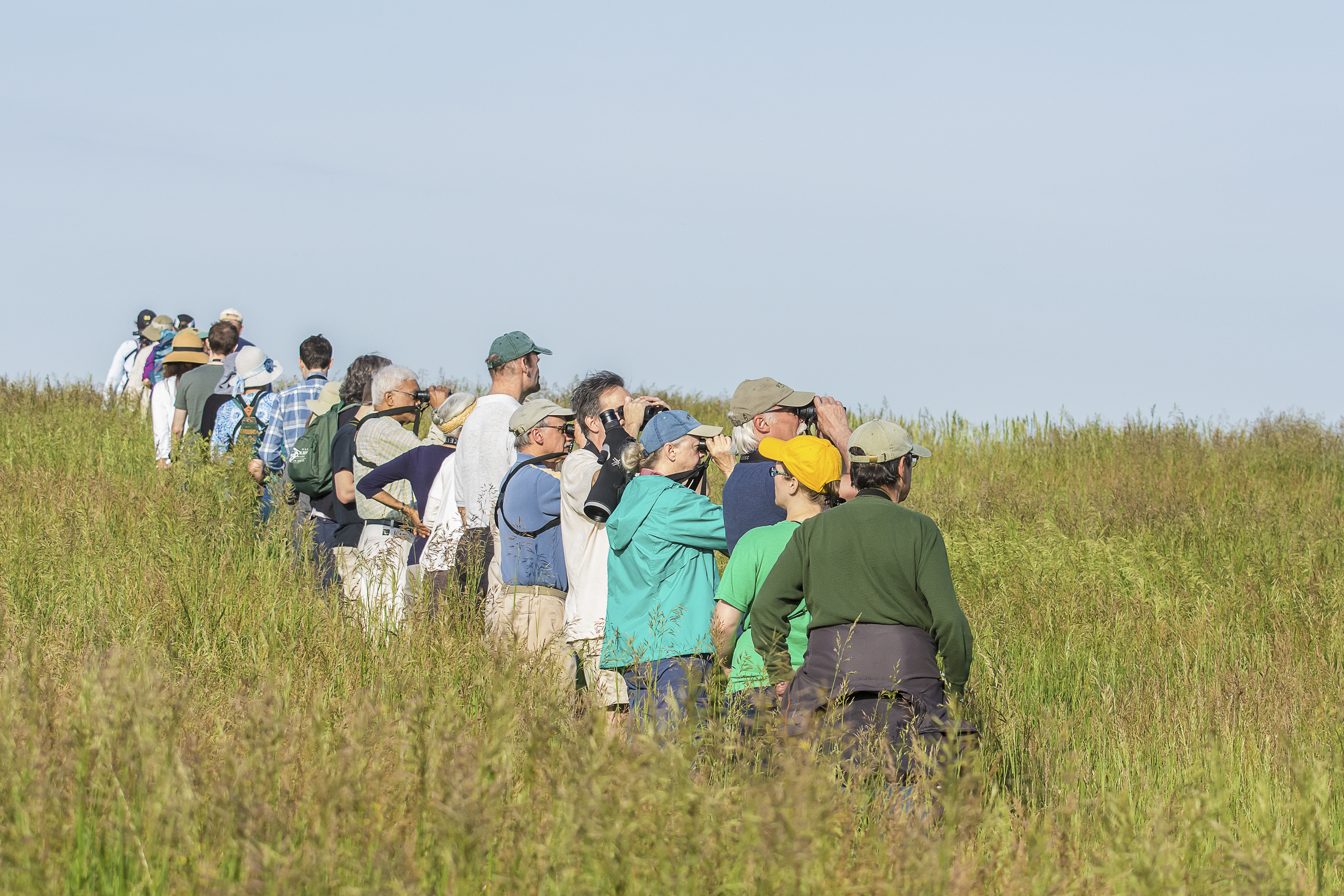
Three Decades of Community Science Wildlife Monitoring: Lessons from the City of Ann Arbor’s Bird, Butterfly, Reptile and Amphibian Data
In southeastern Michigan, the City of Ann Arbor Parks & Recreation Department's Natural Area Preservation (NAP) division has amassed nearly 30 years of ecological survey data through volunteer-based community science initiatives. These datasets, managed using software like eBird, PollardBase, and Survey123, track the presence, diversity, and distribution of birds, butterflies, and herpetofauna (herps; reptiles and amphibians) within Ann Arbor’s natural areas.
Effective management is essential for protecting urban and peri-urban natural areas, which serve as critical refugia for biodiversity and provide key ecosystem services despite pressures from habitat fragmentation, invasive species, and climate change. Understanding species distributions within these spaces is crucial for guiding conservation and informing management strategies.
We leveraged these extensive datasets to analyze long-term trends across space and time, examining the effects of park characteristics, management activities, and climate change on species abundance, diversity, and composition. The results of our analyses highlight key ecological patterns and will help inform the ongoing adaptive management of natural areas within the City of Ann Arbor.
Ludovico Behrendt, Megan Eakin, Michael Enda, Jana Hustedt & Troy Tofil


Our mission is to protect and restore the city’s natural areas and foster an environmental ethic within the community.
EXECUTIVE SUMMARY
Explore our Executive Summary for a concise overview of our research, key findings, and insights.
WILDLIFE SURVEY STATISTICS (1996 - 2023)
DATA STANDARDIZATION & ANALYTICAL METHODS

We standardized each dataset to account for variations in survey effort and observer expertise, adjusting methods based on taxonomic group differences. Using R and ArcGIS, we analyzed trends in species abundance, diversity, and composition across spatial and temporal scales. These trends were then assessed in relation to park characteristics, management activities, and climate change to better understand ecological patterns in Ann Arbor parks. For a more in-depth description, view the methods and standardization sections of our report below.
RESULTS

Our analysis shows that management practices, such as invasive species removal and controlled burns, positively affect wildlife biodiversity. Additionally, this data enhances our understanding of species distribution and abundance, providing critical insights for adaptive, data-driven management strategies. These findings will help guide future conservation efforts and ensure the continued health of Ann Arbor’s natural areas. If you would like a comprehensive discussion of our analytical results, below are our findings highlighting ecological trends and the impact of park characteristics, management activities, and climate change on ecosystems in Ann Arbor parks.
RECOMMENDATIONS
Here are key recommendations from our analysis:
- Prioritize management in high-quality habitats with minimal invasive species.
- Consider more than just park size when determining management priorities.
- Improve survey precision with more detailed location data for better spatial analysis.
- Assess specific management techniques to inform adaptive strategies for Ann Arbor’s Natural Area Preservation.
- Conduct experimental studies, such as evaluating prescribed burn timing and frequency, to refine management approaches.
For more details, please refer to the full recommendations section above.
MEET OUR TEAM

Ludovico Behrendt is a SEAS masters student currently specializing in Ecosystem Science and Management. He received his Bachelor's of science from University of Toronto while studying conservation biology. Previous to pursuing his his master's he worked in an Eco-toxicology lab in researching how microplastics waste from restaurants was impacting local urban freshwater ecosystems in Toronto. In his free time he enjoys biking and going on hikes with friends

Jana is a master's student at the University of Michigan School for Environment and Sustainability specializing in Ecosystem Science and Management. Originally from Germany, she grew up in Houston, Texas and completed her Bachelor of Science in Biological Sciences at Colorado State University in 2021. Jana has experience volunteering in wolf conservation, conducting forestry inventories and research, and analyzing long-term community science datasets for multiple research projects. In her free time, she enjoys backpacking, reading, and exploring local coffee shops.

Megan is a SEAS M.S. student specializing in Ecosystem Science and Management. She received her B.S. from Central Michigan University in 2021 in Ecology, Evolution, and Conservation Biology. Megan has a lot of experience in wet lab work and is currently a lab manager at UofM. Her passions include herpetology and engaging local communities to conservation efforts. Outside of work, she enjoys reading, hanging out with her chickens, and chasing sunsets.

Michael's contributions to this project focused on analyzing spatial and temporal trends in bird observations, developing intermediate variables for use in further analyses, and documenting code for future use by the City and other researchers. He earned a B.S. in Philosophy with a minor in Mathematics from the University of Utah in 2019. At SEAS, Michael approached environmental issues through a social-ecological systems lens and is interested in translating ecological and social science data into actionable insights for policymakers. His goal is to ensure that policy is informed and motivated by the best available understanding of the world around us.

Troy's contributions to this project focused on bird data analysis to explore ecological trends, assess the impacts of management practices, and examine the relationship between climate, spatial data, and park characteristics on avian populations. His findings revealed how bird abundance and diversity relate to park size and management using the Shannon Diversity Index. Troy earned a B.S. in Biology from the Ohio State University in 2021. His research interests include wildlife conservation, natural resource management, and land stewardship, using spatial and ecological data for informed decision-making. Outside of work, Troy enjoys outdoor activities, exploring national parks, reading, and spending time with loved ones.








